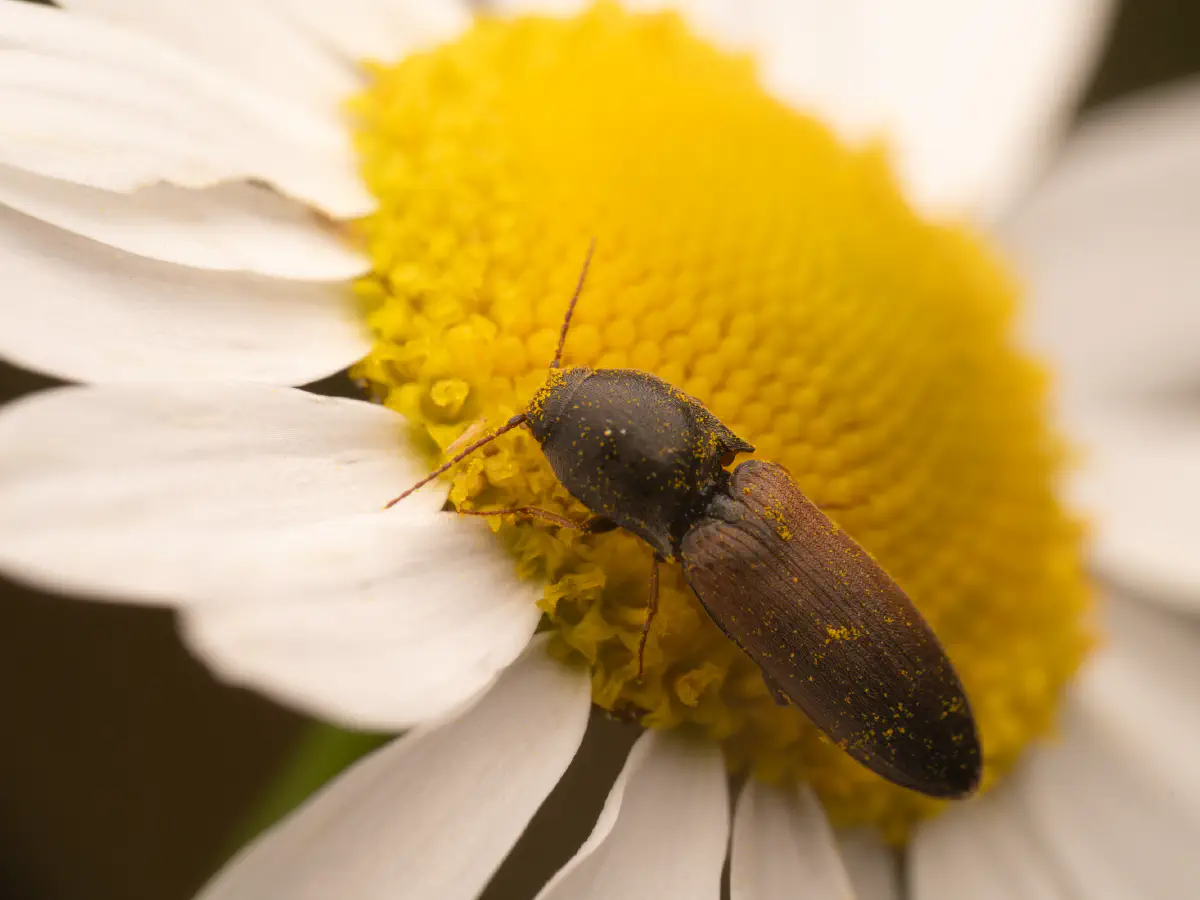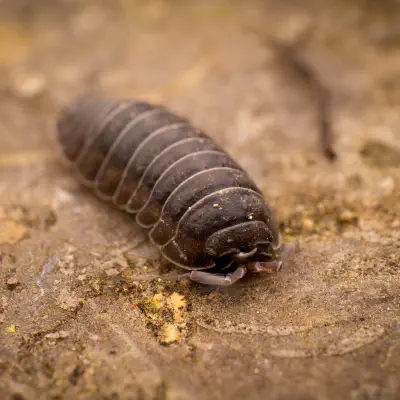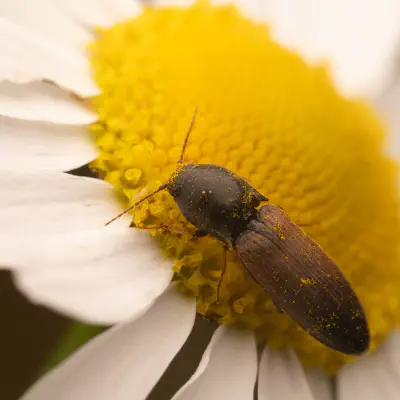The length of Agriotes ustulatus adults ranges from 7 to 13 mm, average 10 mm. Compared to other species of Agriotes found in Europe, they can be identified by a combination of different morphological features, mainly on the pronotum, the elytra and the antennae:
The pronotum has a characteristic surface structure and the hairs on the lower middle part are arranged in a way that they point to one spot above the hind margin, see the
arrow on the image at the far right.
The base of the elytra near the scutellum have elongated pits, see arrows on the first image at the right.
The 4th antennal segment is clearly longer than the 2nd segment.
The color of the elytra is variable and is typically either light brown with the tips often darker or completely dark brown to black. All A. ustulatus populations contain mixtures of these two color forms. However, intermediate colors also
exist. Studies in two areas, one in northern Italy and the other in the Czech Republic, found the percentage of dark forms on average to be 40% and 32% respectively, independent of the gender of the beetles.
Before applying pesticides to infestations of Agriotes larvae (wireworms) in Europe, it is required to determine whether the population exceeds the damage threshold which varies from species to species. Therefore, it is necessary to identify the species causing the
infestation. Agriotes ustulatus larvae can be identified by a combination of morphological features which are illustrated at the left. The most reliable character is the presence of dark elevated tubercles around the base of the setae at the tip of the larval abdomen, the 9th abdominal segment (figure a). Other distinguishing features are the shape of the right mandible that usually forms a large angle (clearly more than 90°) between the tip and the subapical
tooth (figure b). However, this angle is variable and is only 90° in about 15% of the larvae. Further, the shape of the frontoclypeus on the head is characteristic (figures c and d). It forms an angle as indicated on figure c that is slightly above 90° in 99.5% of the larvae, in contrast to other Agriotes species. Molecular identification of the larvae is also reliable.



